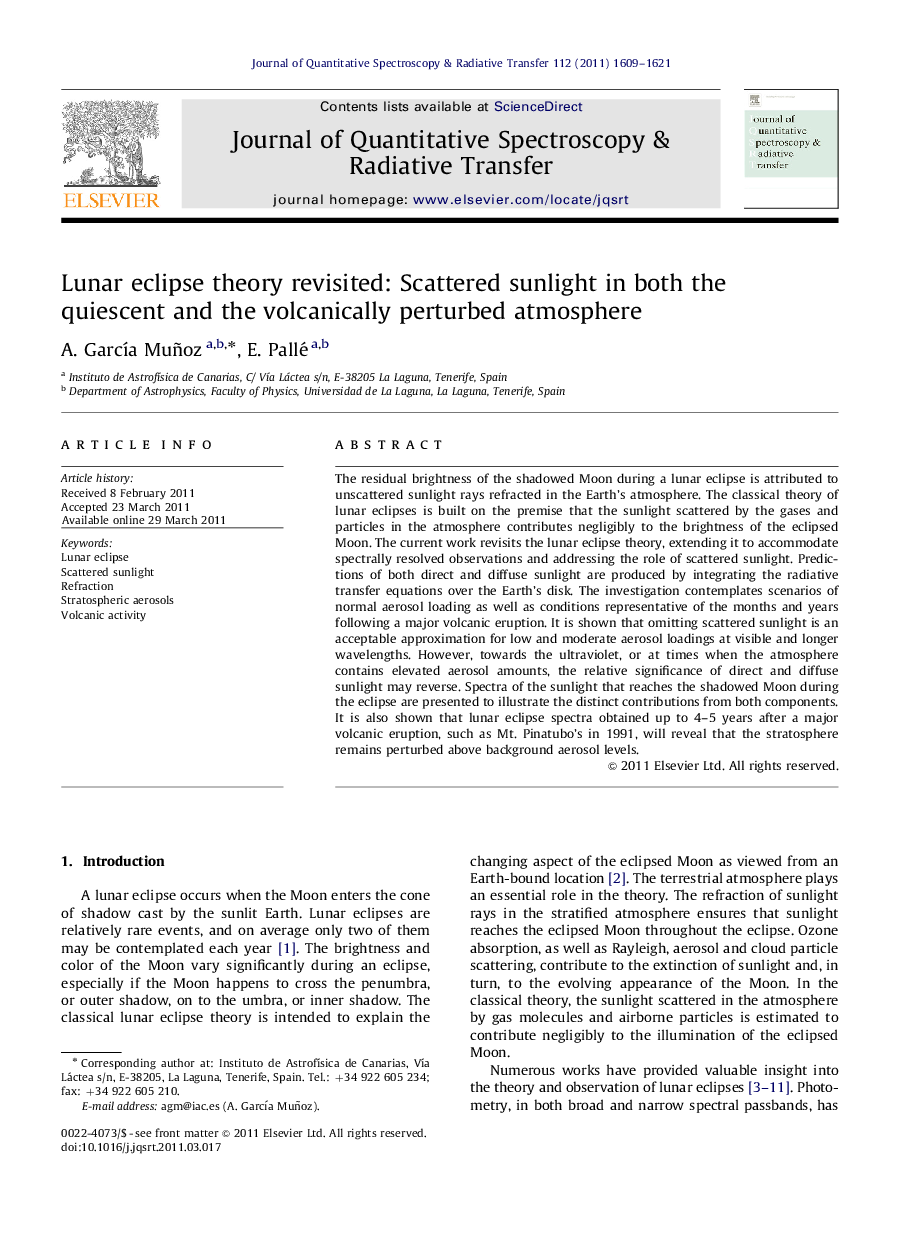| Article ID | Journal | Published Year | Pages | File Type |
|---|---|---|---|---|
| 5429581 | Journal of Quantitative Spectroscopy and Radiative Transfer | 2011 | 13 Pages |
The residual brightness of the shadowed Moon during a lunar eclipse is attributed to unscattered sunlight rays refracted in the Earth's atmosphere. The classical theory of lunar eclipses is built on the premise that the sunlight scattered by the gases and particles in the atmosphere contributes negligibly to the brightness of the eclipsed Moon. The current work revisits the lunar eclipse theory, extending it to accommodate spectrally resolved observations and addressing the role of scattered sunlight. Predictions of both direct and diffuse sunlight are produced by integrating the radiative transfer equations over the Earth's disk. The investigation contemplates scenarios of normal aerosol loading as well as conditions representative of the months and years following a major volcanic eruption. It is shown that omitting scattered sunlight is an acceptable approximation for low and moderate aerosol loadings at visible and longer wavelengths. However, towards the ultraviolet, or at times when the atmosphere contains elevated aerosol amounts, the relative significance of direct and diffuse sunlight may reverse. Spectra of the sunlight that reaches the shadowed Moon during the eclipse are presented to illustrate the distinct contributions from both components. It is also shown that lunar eclipse spectra obtained up to 4-5 years after a major volcanic eruption, such as Mt. Pinatubo's in 1991, will reveal that the stratosphere remains perturbed above background aerosol levels.
⺠The role of scattered sunlight in the lunar eclipse theory is addressed. ⺠Umbra spectra have a more complex structure than penumbra spectra. ⺠Scattered sunlight may be dominant for elevated aerosol loadings. ⺠Major volcanic eruptions have an impact on the appearance of lunar eclipse spectra.
